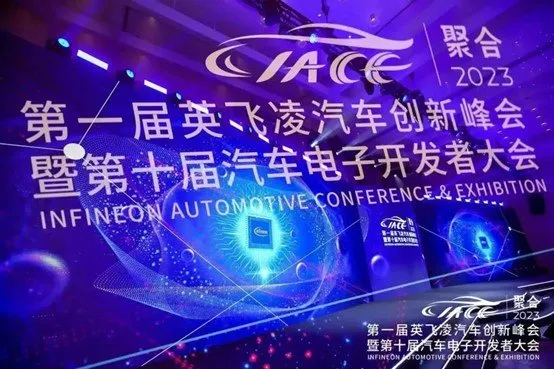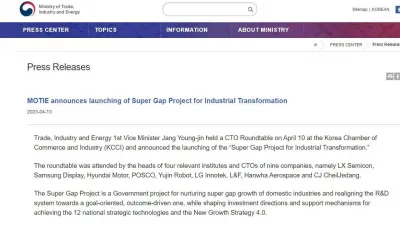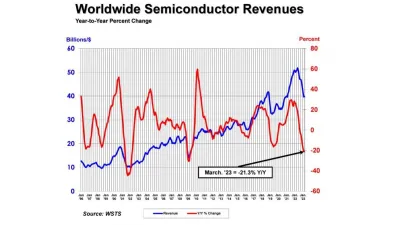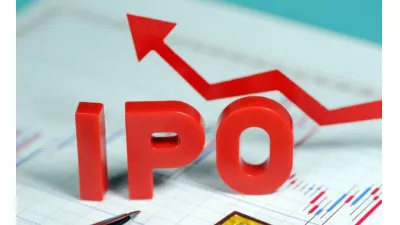Infineon Technologies: Seize low-carbon and digital opportunities, strive to be the
Intellectualization, low carbonization and digitalization are important trends of automobile industry development. Infineon is a global leader in automotive electronics, power systems, IoT and other fields, and makes research and judgment on future automotive industry trends. Enterprises from the upstream and downstream of the industrial chain also expressed their own views on the industrial trend from different perspectives. The main views include: high-speed navigation assisted driving and self-parking functional experience will be upgraded in 2023; 2023 can be defined as the software year of the smart cockpit; Terminal logistics automatic distribution in supermarket express and other scenes will usher in the outbreak, forming a sustainable commercial closed loop.
Low carbon, digital: for semiconductor manufacturers to bring business growth momentum
Pan Dawei pointed out that thanks to the rapid growth of the global electric vehicle market, the electrification, intelligence and interconnection of vehicles have seen considerable growth. Infineon ranks first in the automotive semiconductor market with 12.7 percent market share. Among them, the automotive power semiconductor market is far ahead, with a market share of 31.7 percent. It has a 14.1 percent market share in the automotive sensor sector. Its market share in the automotive MCUs segment is 22%, and it is also the industry leader in the field of NOR Flash memory chips for vehicles, with the first market share in the world.
At the same time, Infineon's product layout is also closely around low carbon, digital to expand. Infineon itself is committed to decarbonization. Mr. Pan revealed that Infineon expects to reduce carbon emissions from its own plants by 70% in 2025 compared to 2019. By 2030, Infineon will be carbon neutral.
In terms of capacity planning, Pan Dawei said that Infineon announced in 2022 that it will invest 5 billion euros in Dresden, Germany to expand its 300mm wafer manufacturing capacity; In 2018, it announced a new 300mm thin-wafer power semiconductor chip plant in Filach, Austria, which will begin production in 2021; In 2022, Infineon also announced the construction of a third site at its Gulin plant in Malaysia, which is expected to start production in 2024. Among the 19 different production sites, the Wuxi plant in China will further increase production capacity and local sourcing capacity over the next five years.
At the same time, Infineon makes continuous and comprehensive innovation in products, applications and business models. On the same day of the conference, Infineon presented its latest products for 2023, including CAN chip, silicon carbide MOSFET power chip and module, Hall current sensor, Hall Angle sensor, millimeter wave radar chip, pressure sensor, and audio sensor.
It is worth mentioning that after experiencing "core shortage" during the epidemic, Infineon has not only strengthened production capacity supply at the production end, but also realized the importance of upstream and downstream collaboration. Especially in the Greater China market, which accounts for the largest share of revenue, Infineon has developed a more detailed localization strategy. That is:Cultivate local development team, strengthen local research and development, production strength;
Establish a local ecosystem to transform and upgrade from only providing semiconductor products to providing system-level solutions to provide more value to customers;
Establish digital ecological community, strengthen the connection with the upstream and downstream through digital technology, improve user experience.
Recently, Infineon held the first Infineon Automotive Innovation Summit and the 10th Automotive Electronics Developers Conference (IACE) with the theme of "Convergence". This conference is an expansion of the previous IADC to continue to deepen partners and strengthen ecosphere cooperation. Infineon worked with industry partners to showcase the cutting edge of low-carbon, digital content in the automotive industry, as well as launch new Infineon products for 2023.
Decarbonization and digitalization are important driving forces for the development of automotive electronics in the next decade, and also bring strong business growth drivers for semiconductor manufacturers. "Thanks to low-carbon and digitalization, Infineon has seen high revenue growth in the past five years," said David Pan, senior vice president of Infineon Technologies Global, President of Greater China and head of Infineon Technologies' Power and Sensing Systems business unit in Greater China.
The "second half" of the automobile: intelligence forms a new business model
At present, the pattern, business form and the whole value chain of the automobile market have changed, the synergistic effect of the automobile ecosystem has been further highlighted, and the upstream and downstream manufacturers have carried out deeper cooperation. Behind this change, is the growing new energy automotive semiconductor.
Speaking about the growth of new-energy automotive semiconductors, Cao Yanfei, senior vice president of Infineon Technologies and head of automotive Electronics Division in Greater China, said that automotive semiconductors, especially new-energy automotive semiconductors, have a huge incremental growth rate, which is expected to double in the next few years at a compound annual growth rate of about 30%.
In Cao Yanfei's opinion, new energy vehicle semiconductors can be broken down into several fields, which are power semiconductors, semiconductors for intelligent and automatic driving assistance, and semiconductors for promoting connectivity. To be specific:
(1) In the field of electrification, Infineon estimates that the proportion of new energy in China's passenger car market will reach 40% in 2025 and 59% in 2030. Driven by this, the new energy vehicle power semiconductor market is expected to grow from $2.1 billion in 2021 to $12.7 billion in 2029, representing a compound annual growth rate of 25%.
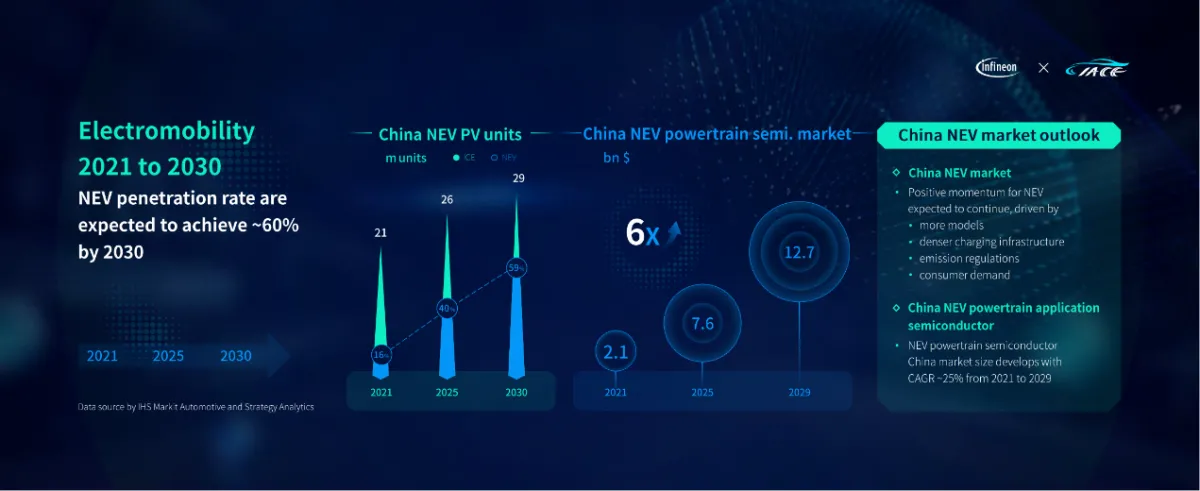
(2) In the field of intelligent assisted driving (L1-L5), Infineon is expected to take up 61% of China's passenger car market in 2025 and 70% in 2030. As a result, the semiconductor market for ADAS applications is expected to grow from $1.4 billion in 2021 to $7.4 billion in 2029, representing a compound annual growth rate of 23%.
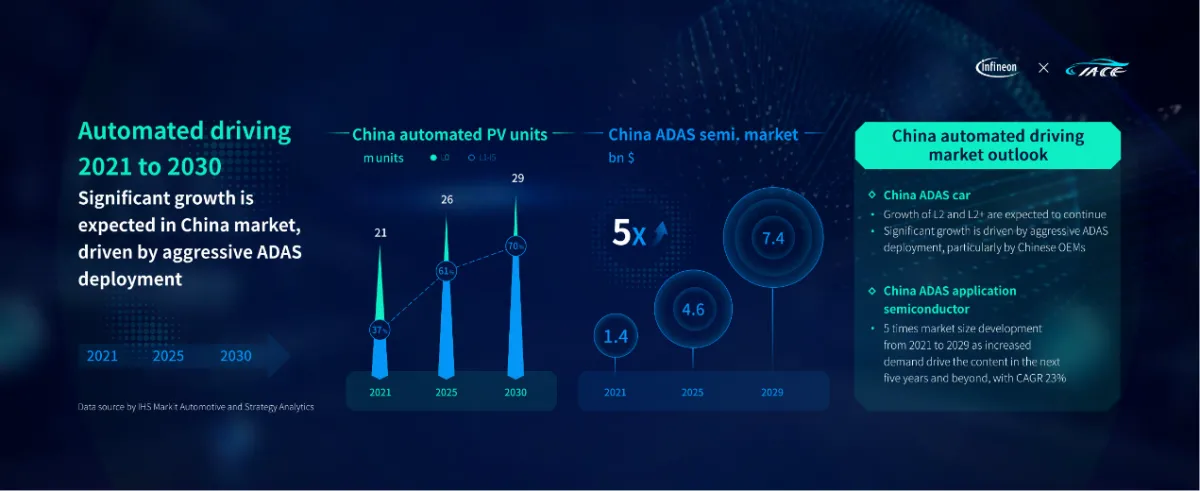
(3) In the field of connectivity, all vehicles, including passenger cars and commercial vehicles, will be connected by 2030. Driven by this, China's domain controller semiconductor market will increase from $5.9 billion in 2021 to $11 billion. The compound annual growth rate is more than 30%.
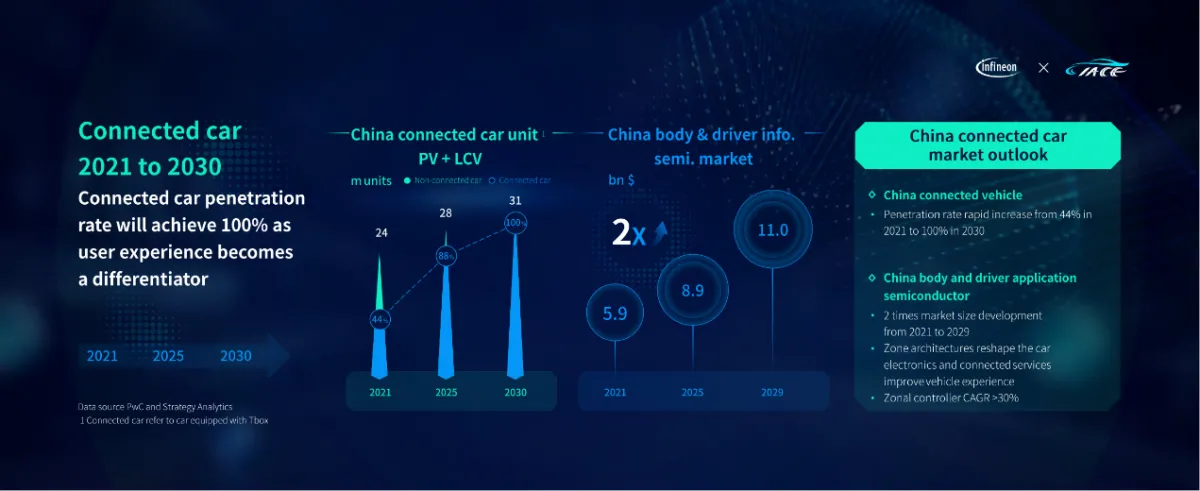
"You can see the automotive semiconductor 'flow' from upstream to partners, tier1s, and ultimately 'flow' to automakers, which tells you that the front-end demand for automotive semiconductors is huge." Cao Yanfei said. Infineon expects the value of single-ride semiconductors for pure electric vehicles to grow from about $1,000 to $1,500 in 2021.
Because of this, in recent years, Infineon has gradually shifted its business focus to automotive business, increased R&D investment, and actively expanded production. Cao Yanfei said that the Automotive electronics Division of Infineon Technologies will continue to focus on using microelectronic technology to make cars greener, safer and smarter.
Ten years of IACE, striving to be the "ACE" of automobile ecosystem
In addition to technology research and development and active production expansion, Infineon also pays attention to the cultivation of automotive talents. On the one hand, it has held a total of ten consecutive Automotive Electronics Developers Conference (IADC); On the other hand, it will gradually cooperate with colleges and universities to cultivate relevant talents, so as to make up for the shortage of talents.
Cao Yanfei introduced that IACE is mainly a developer platform, aiming to continuously expand and expand Infineon fans, many engineers and expert friends, and also enable Tier1 or some local automakers to research and development, including wider market expansion. "There is an egg hidden in the IACE. 'ACE' means' ace 'in English. We hope that Infineon's very rich products will become a trump card for all partners to compete in the market, expand customers and enhance competitiveness!"
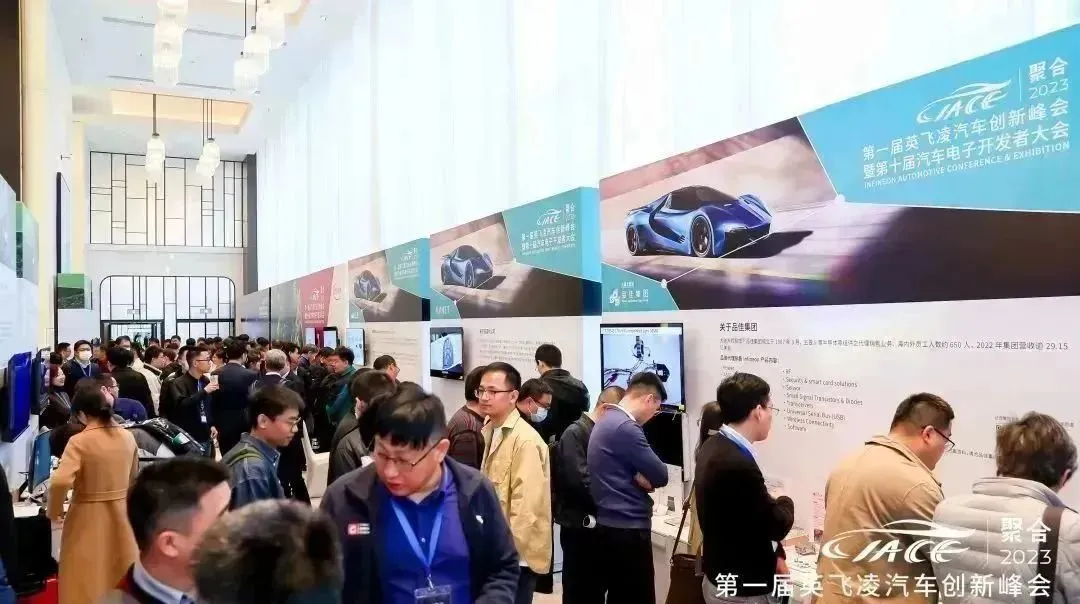
China has made important breakthroughs in the research and development of 6G communication technology
China has made important breakthroughs in the research and development of 6G communication technology. According to the second Academy of Aerospace Science and Industry, 25 institutes of the Second…Korea announced the launch of the
South Korea's first deputy Minister of Trade, Industry and Energy stressed that scattered small-scale projects run by a few experts can neither produce significant results nor outperform compe…Global semiconductor sales continued to decline in the first quarter, but monthly sales rebounded
"Global semiconductor sales continued to decline in the first quarter of 2023 due to cyclical markets and macroeconomic headwinds, but monthly sales rose in March for the first time in nearly a y…South Korea wants to maintain global dominance and gain a competitive edge in advanced logic chips.
In 2022, there were only five ipos raising more than $100m in the whole year. But analysts believe South Korea's IPO market will gain momentum this year, with a number of companies valued at m…
- Top News
- HRE CSA Series Commercial Grade MLCC Capacitor Selection Guide
- HRE CIA Series Industrial Grade MLCC Capacitor Selection Guide
- HRE CAA/CAI Series Automotive Grade MLCC Capacitor Selection Guide
- FTR20D681K Varistor Applications and Technical Advantages: Providing Comprehensive Protection for Your Circuits
- Samsung Electronics showcases its new automotive technology strategy at Foundry Forum EU 2023
